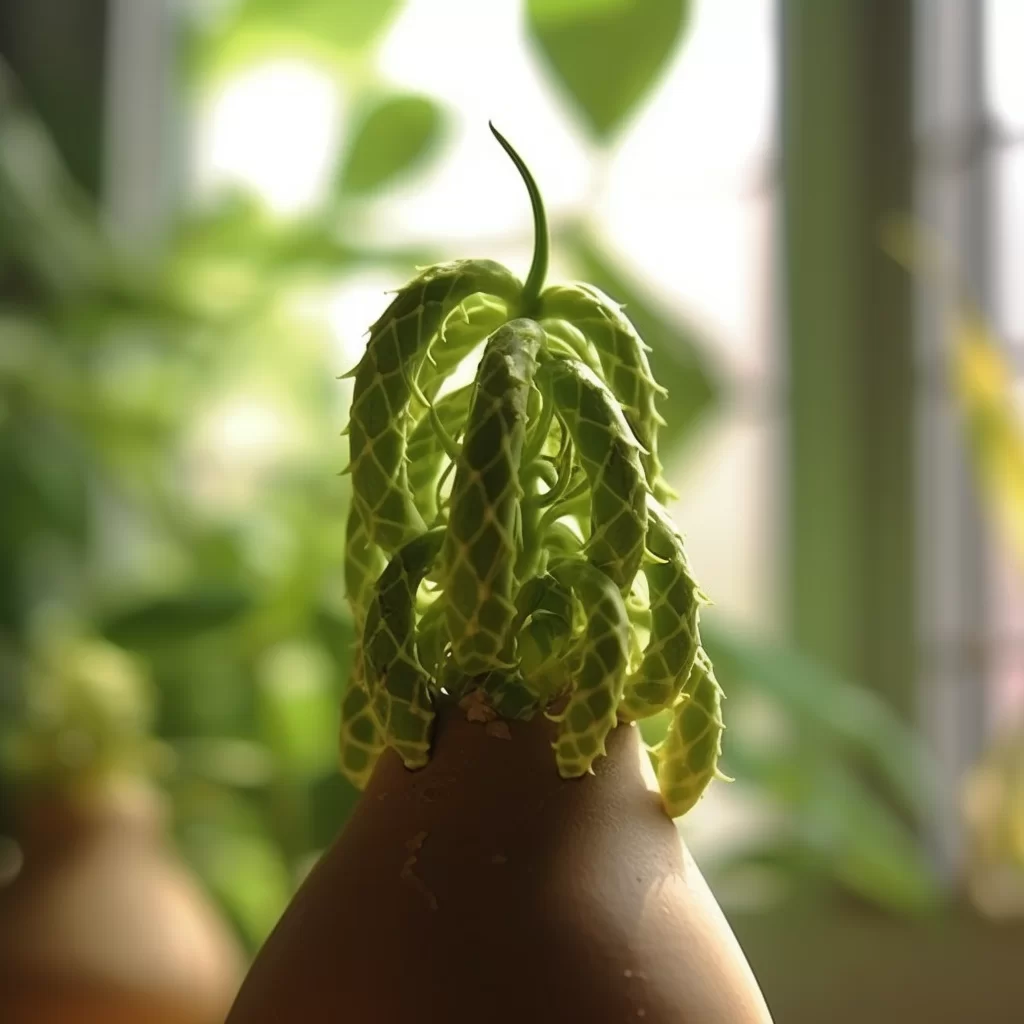Story of Day :
Contents
The Snake Gourd Plant: A Complete Guide and Care Tips
Are you looking for a unique addition to your garden? Look no further than the snake gourd plant! This tropical vine produces long, curved fruits that resemble snakes.
But don’t let their appearance scare you off – these gourds are delicious and packed with nutrients.
What is a Snake Gourd Plant?
The snake gourd plant (Trichosanthes cucumerina) is a member of the cucumber family.
It originated in Southeast Asia but has since spread to other parts of the world, including India, Africa, and South America.
The plant is grown for its long fruits which can reach up to 6 feet in length.
How to Grow Snake Gourds

Soil and Sunlight Requirements
- The snake gourd plant prefers well-draining soil that is rich in organic matter.
- It also needs full sunlight – at least 6 hours per day.
- If your area experiences very hot summers, provide some shade during midday hours or protect it from direct sun exposure with some sort of cover or shade cloth until it becomes established (4-5 weeks).
Sowing Seeds and Transplanting Seedlings
- You can sow seeds directly into the ground or start them indoors 4-6 weeks before transplanting outside if living in colder climate region where frost occurs frequently.
- Plant the seeds or seedlings 1 inch deep and 8-10 inches apart.
If planting more than one, space them at least 3 feet apart.
- Cultivate soil around the plant regularly to ensure good drainage and prevent waterlogging as Snake Gourds do not like standing water near their root system.
- Note:In regions like North America they are usually planted during late springs; April-June period when temperatures starts warming up after winter season ends & before summers starts kicking-in; this will ensure proper growth cycle throughout summer season as these plants require sustained warmth to grow properly.
Fertilizing and Watering
- Use a balanced fertilizer or compost before planting, then add additional fertilizer every two weeks throughout the growing season for optimum growth.
- Keep soil consistently moist but not soggy by watering deeply about once a week during dry periods.
Over-watering can lead to root rot & fungal infection so be careful with watering schedule and amount of water given at once.
- Maintain good drainage in pots & outdoor raised beds for better plant health as they don’t like wet feet; use appropriate potting mix with good portion of sand/soil combo for better drainage if planting in raised beds (12-18 inches depth).


Pest and Disease Control
While snake gourd plants are relatively easy to grow, they are susceptible to some pests and diseases:
-
Pests:
– Aphids
– Spider mites
– Fruit fly larvae
– Slugs
Diseases:
– Powdery mildew
– Anthracnose

Tips for Harvesting Snake Gourds
You should harvest snake gourds when they are young (about 1-2 feet in length) for best flavor and texture.
Gourds left on the vine too long can become tough and fibrous.
Use a sharp knife or pruning shears to cut the gourd from the vine.
Be careful not to damage the skin – it’s thin and delicate.
Conclusion
The snake gourd plant is a unique addition to any garden, providing both visual interest and delicious fruits.
With proper care, you can enjoy a bountiful harvest of these tasty gourds throughout the growing season.
Make sure to provide it enough sunlight, well-drained soil with adequate nutrients & water supply; keep pests & diseases at bay by inspecting regularly as prevention is better than cure when it comes to plants!